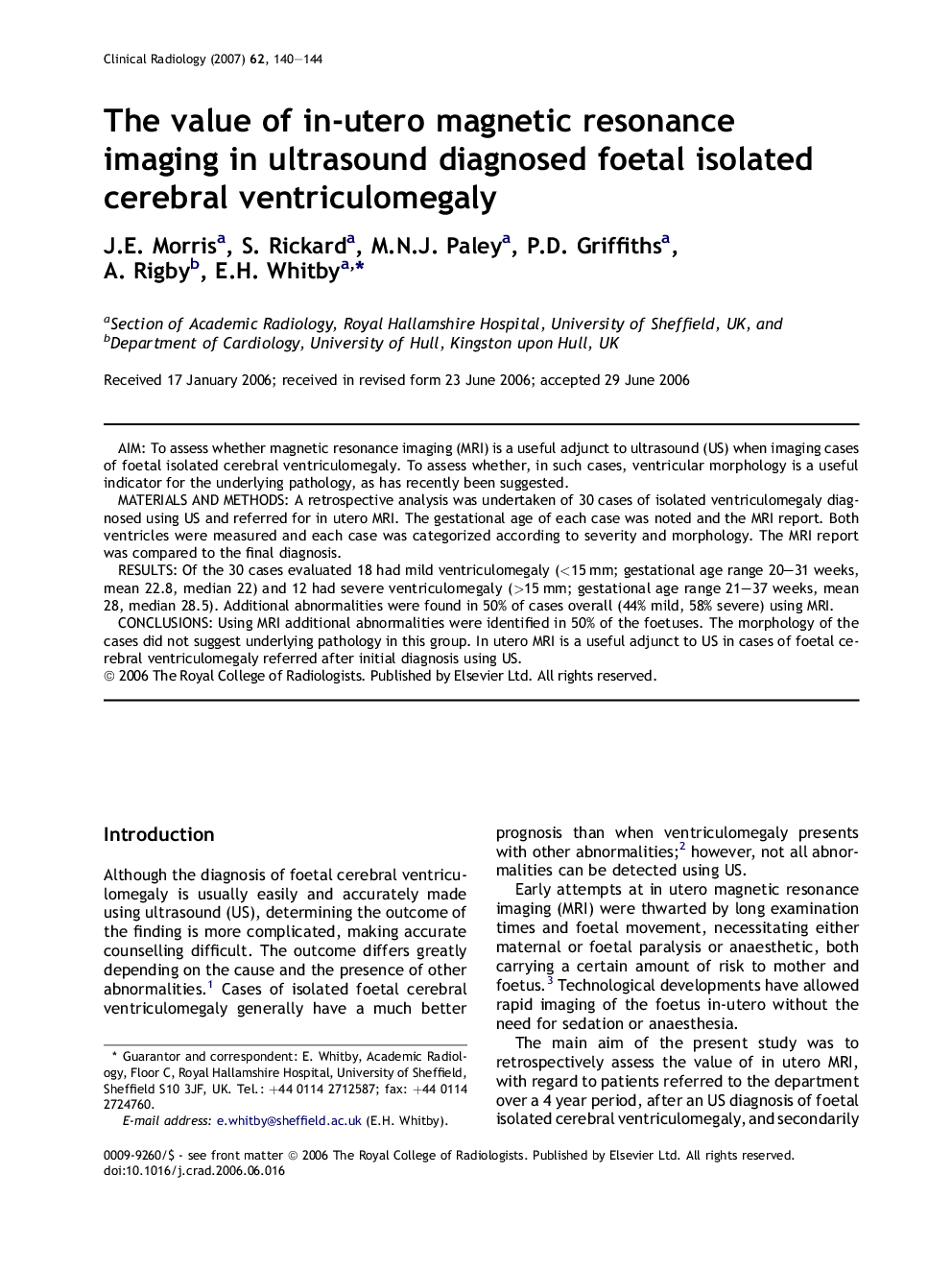| Article ID | Journal | Published Year | Pages | File Type |
|---|---|---|---|---|
| 3984125 | Clinical Radiology | 2007 | 5 Pages |
AimTo assess whether magnetic resonance imaging (MRI) is a useful adjunct to ultrasound (US) when imaging cases of foetal isolated cerebral ventriculomegaly. To assess whether, in such cases, ventricular morphology is a useful indicator for the underlying pathology, as has recently been suggested.Materials and methodsA retrospective analysis was undertaken of 30 cases of isolated ventriculomegaly diagnosed using US and referred for in utero MRI. The gestational age of each case was noted and the MRI report. Both ventricles were measured and each case was categorized according to severity and morphology. The MRI report was compared to the final diagnosis.ResultsOf the 30 cases evaluated 18 had mild ventriculomegaly (<15 mm; gestational age range 20–31 weeks, mean 22.8, median 22) and 12 had severe ventriculomegaly (>15 mm; gestational age range 21–37 weeks, mean 28, median 28.5). Additional abnormalities were found in 50% of cases overall (44% mild, 58% severe) using MRI.ConclusionsUsing MRI additional abnormalities were identified in 50% of the foetuses. The morphology of the cases did not suggest underlying pathology in this group. In utero MRI is a useful adjunct to US in cases of foetal cerebral ventriculomegaly referred after initial diagnosis using US.
